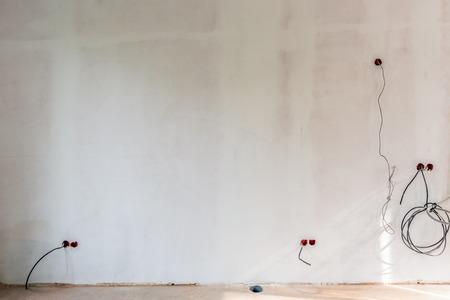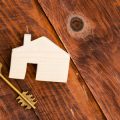1. Tools and Materials Youll Need
If youre planning to install and finish drywall like a pro, having the right tools and materials is key. Before you start cutting or hanging any sheets, make sure you’ve got everything on hand. Here’s a quick breakdown of the essential items you’ll need for your drywall project.
Drywall Sheets
These are the large panels that will form your new wall or ceiling surface. Drywall comes in different thicknesses—most commonly 1/2-inch for walls and 5/8-inch for ceilings or areas requiring fire resistance.
Utility Knife
A sharp utility knife is used to score and snap drywall sheets to the correct size. It’s simple but essential for clean cuts.
T-Square or Drywall Square
This helps you mark straight lines when cutting drywall sheets. It also ensures your edges are square, which makes installation easier and cleaner.
Joint Compound (Mud)
This is the paste-like material used to fill joints, cover screws, and smooth out surfaces before painting. You’ll typically use all-purpose joint compound for most tasks.
Drywall Tape
Used with joint compound to seal seams between drywall sheets. There are two main types: paper tape and mesh tape. Paper tape is stronger, while mesh tape is easier to apply.
Sanding Tools
After applying joint compound, youll need sanding tools to create a smooth surface. Sanding sponges or pole sanders with fine-grit sandpaper work best for this job.
Quick Reference Table: Essential Drywall Tools & Materials
| Item | Purpose |
|---|---|
| Drywall Sheets | Main surface for walls/ceilings |
| Utility Knife | Cutting drywall accurately |
| T-Square/Drywall Square | Marking straight lines and ensuring square edges |
| Joint Compound | Filling seams and smoothing surfaces |
| Drywall Tape (Paper/Mesh) | Sealing joints between drywall panels |
| Sanding Tools | Smoothing dried joint compound for a finished look |
With these tools and materials ready, youll be well-prepared to start hanging and finishing drywall like a seasoned DIYer.
2. Measuring and Cutting Drywall
Before you start hanging drywall, getting the right measurements and making accurate cuts is key to a professional-looking finish. In this section, we’ll walk you through how to measure walls and ceilings properly and cut drywall using simple tools like a utility knife and straight edge.
Tools You’ll Need
- Measuring tape (at least 25 feet)
- Utility knife with sharp blades
- Drywall T-square or straight edge
- Pencil or marker
- Sawhorses or a flat surface for cutting
Step-by-Step: Measuring for Drywall
Start by measuring the height and width of your walls or ceilings. Write down each measurement carefully. For walls taller than 8 feet, you may need to stack two drywall sheets vertically or use longer panels if available.
| Area | What to Measure |
|---|---|
| Walls | Height from floor to ceiling, width from corner to corner |
| Ceilings | Total length and width across joists |
Tips for Accurate Measuring:
- Always double-check your numbers before cutting.
- Add half an inch to the height if you’re installing drywall horizontally to allow for a snug top fit.
- If there are windows, doors, or outlets—measure their positions carefully so you can cut out openings accurately.
How to Cut Drywall
- Lay the drywall sheet flat on sawhorses or the floor with the front (finished) side facing up.
- Use a pencil and T-square to mark your measurements directly onto the panel.
- Score along the line with a utility knife—don’t try to cut all the way through; just score the paper surface.
- Bend the board away from the cut line until it snaps cleanly along the score.
- Cut through the back paper layer with your knife to finish the cut.
Pro Tip:
If youre cutting out openings for electrical boxes, use a drywall saw or rotary tool after marking their position. Take extra time with these cuts so everything lines up perfectly when you install it.

3. Hanging Drywall Panels
Now that youve prepped your space and gathered your tools, its time to start hanging drywall panels. This step requires some muscle and a bit of patience, but with the right technique, youll get smooth walls and ceilings ready for finishing.
Step-by-Step Instructions for Hanging Drywall
Step 1: Start with the Ceiling
Always begin with the ceiling before moving on to the walls. This helps support the wall panels and creates a cleaner finish at the joints.
- Measure the length of the ceiling and cut drywall panels to fit using a utility knife or drywall saw.
- With a helper or a drywall lift, raise the panel into position, perpendicular to the joists.
- Screw in drywall screws every 12 inches along each joist, starting from the center and working outward. Make sure screws are slightly dimpled below the surface without breaking the paper face.
Step 2: Hang Drywall on Walls
Once the ceiling is done, move on to the walls. Hang drywall horizontally for better structural integrity and fewer seams (especially in standard 8-foot rooms).
- Measure from floor to ceiling and cut panels accordingly.
- If your room has standard 8-foot ceilings, use 4×8-foot sheets horizontally to reduce seams.
- Tightly butt each panel against the previous one—don’t leave gaps.
- Screw into studs every 16 inches apart, again slightly dimpling screws below surface level without tearing through the paper layer.
Screw Fastening Guidelines
| Location | Screw Spacing | Screw Length |
|---|---|---|
| Ceiling Joists | Every 12 inches | 1¼ inch coarse-thread screws |
| Wall Studs | Every 16 inches | 1¼ inch coarse-thread screws |
| Edges/Ends of Panels | No closer than 3/8 inch from edge | Same as above |
Tips for Success
- Avoid placing four corners of drywall sheets together at one point—this weakens the joint. Stagger them instead.
- If cutting out around electrical boxes or windows, use a drywall saw or rotary tool for precision.
- A cordless drill with adjustable clutch is ideal for driving screws without overdriving them.
- If you’re working alone, consider renting a drywall lift—it makes ceiling work much easier and safer.
This stage sets up everything for taping and mudding later on, so take your time and make sure panels are secure and properly aligned before moving forward.
4. Taping and Applying Joint Compound
Now that your drywall panels are securely fastened, it’s time to tape the seams and apply joint compound (also known as mud). This step is crucial for creating a seamless, professional-looking wall. Heres how to do it right, layer by layer.
Step 1: Prepare Your Tools and Materials
- Paper or mesh drywall tape
- All-purpose joint compound
- 6-inch, 10-inch, and 12-inch taping knives
- Mud pan
- Sanding sponge or sandpaper (120–150 grit)
Step 2: Tape the Seams
Start by applying a thin layer of joint compound over the seam with a 6-inch taping knife. Then press drywall tape into the wet mud. For inside corners, fold the paper tape lengthwise and press it into the corner using the knife. Smooth out any bubbles or wrinkles as you go.
Tips for Taping:
- Flat seams: Use paper tape for better bonding strength.
- Butt joints: Feather both sides evenly to avoid a noticeable bump.
- Inside corners: Use a corner trowel or fold paper tape properly.
Step 3: Apply First Coat of Joint Compound
Once the tape is in place, apply a thin coat of joint compound over the taped seams using your 6-inch knife. Cover all screw or nail heads as well. Let it dry completely—this usually takes about 24 hours depending on humidity levels.
Step 4: Apply Second Coat
After the first coat dries, lightly sand any high spots or ridges. Then use a wider knife (10-inch) to apply the second coat. Extend the mud a few inches beyond the first coat to help feather it out smoothly.
Step 5: Apply Final Coat
The final coat should be applied using a 12-inch knife. This coat should be very thin and smooth, extending even farther past the previous layer to blend everything seamlessly. Let it dry fully before sanding.
Coat Comparison Table:
| Coat | Taping Knife Size | Description |
|---|---|---|
| First Coat | 6-inch | Covers tape and fasteners with thin layer of mud |
| Second Coat | 10-inch | Smooths over seams, extends coverage area |
| Final Coat | 12-inch | Feathers edges for a seamless finish |
Sanding for Smoothness
After all coats are fully dried, use a sanding sponge or fine-grit sandpaper to smooth out any imperfections. Be gentle—you don’t want to sand through your work. Always wear a dust mask when sanding drywall compound.
Troubleshooting Common Issues:
- Bubbles under tape: Remove bubbled section and re-tape with fresh mud.
- Lumpy finish: Sand between coats and apply thinner layers.
- Tape showing through: Add another thin coat of compound over visible tape lines.
This process might take some patience, but taking your time here pays off with crisp, clean walls that are ready for paint or texture.
5. Sanding and Surface Preparation
Once your joint compound is completely dry, it’s time to sand the surface to get it perfectly smooth and ready for priming or painting. This step is all about refining your work and making sure everything looks seamless.
Choosing the Right Sandpaper
Start with a medium-grit sandpaper (around 120-grit) to knock down high spots and then switch to a finer grit (around 220-grit) for a smooth finish. Use a sanding block or pole sander for flat surfaces and a sanding sponge for corners and curves.
| Tool | Best For |
|---|---|
| Sanding Block | Flat wall areas |
| Pole Sander | Ceilings or high walls |
| Sanding Sponge | Corners and detailed areas |
Helpful Sanding Tips
- Always wear a dust mask and goggles to protect yourself from drywall dust.
- Use light pressure—pressing too hard can gouge the compound or damage the drywall paper.
- Work in circular motions for even results.
- Shine a work light across the surface at an angle to spot imperfections as you go.
Check for Imperfections Before Moving On
After sanding, run your hand over the surface to feel for any bumps or uneven areas. You can also use a flashlight held close to the wall at an angle to highlight flaws. If needed, apply another thin coat of joint compound, let it dry, and sand again.
What to Look For:
- Tape lines that are still visible
- Dents or divots in the compound
- Patches where compound has chipped off during sanding
- Rough edges around screw holes or seams
Pro Tip:
If you’re planning to paint with a glossy or semi-gloss finish, be extra thorough—these finishes highlight even minor surface imperfections.
6. Final Touch-Ups and Cleanup
Youre almost there! After hanging, taping, and sanding your drywall, its time for the final touch-ups and cleanup. This step ensures your surface looks smooth and professional before you move on to priming, painting, or applying texture.
How to Handle Minor Imperfections
Even after sanding, you might notice small dents, scratches, or air bubbles in the joint compound. Heres how to fix them:
- Inspect the surface: Use a bright light or flashlight held at an angle to highlight any flaws.
- Fill imperfections: Apply a thin coat of joint compound over small dents or gaps using a 6-inch drywall knife.
- Let it dry: Wait until fully dry (usually overnight).
- Sand lightly: Use fine-grit sandpaper (around 220 grit) to blend the patch with the surrounding surface.
Removing Drywall Dust
Sanding drywall creates a lot of fine dust that can affect paint adhesion and get everywhere if not handled properly. Here’s how to clean it up effectively:
| Step | Description |
|---|---|
| Vacuum First | Use a shop vac with a HEPA filter to remove most of the loose dust from walls, floors, and nearby surfaces. |
| Tack Cloth or Damp Sponge | Wipe down the drywall with a slightly damp sponge or tack cloth to pick up any remaining fine dust without wetting the surface too much. |
| Tape Off Vents & Outlets | If you haven’t already, cover HVAC vents and electrical outlets to prevent dust from spreading into other areas of the house. |
Your Drywall is Ready for What’s Next
If your wall feels smooth to the touch and shows no obvious flaws under angled lighting, youre ready for priming or adding texture. Before you start painting or applying any finishes:
- Check moisture levels: Make sure all mudded areas are completely dry.
- Select the right primer: Use a PVA drywall primer to seal the surface and create an even base for paint or wallpaper.
A Few Pro Tips
- Avoid over-sanding: Too much sanding can expose the paper facing on drywall sheets and create uneven spots.
- Corners matter: Double-check inside corners for any missed spots—theyre easy to overlook but very noticeable once painted.
This last phase is all about patience and attention to detail. Taking your time here pays off big when it comes time to paint or decorate your walls!


